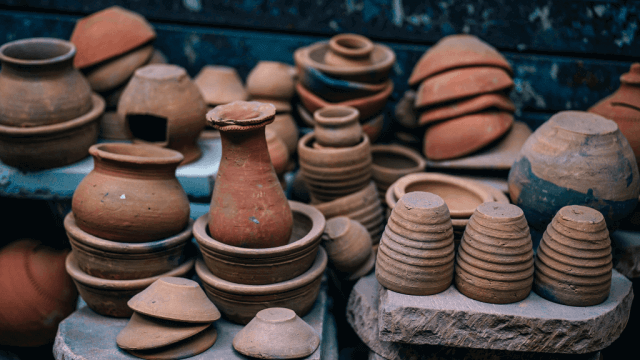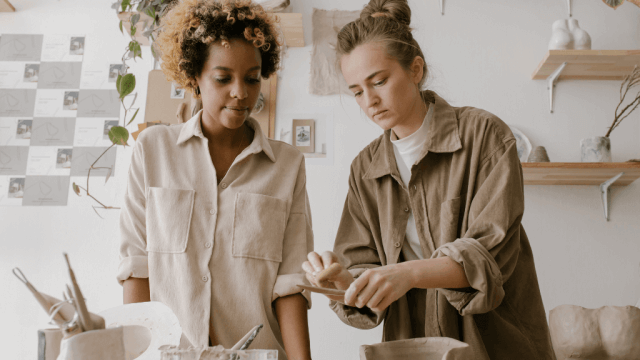As a beginner, expect pottery costs around $500-$800 for classes, tools, and clay.
Intermediate potters should budget $3,000-$4,500 for better equipment and a personal kiln.
Professional potters may invest an additional $10,000-$20,000 for high-grade equipment and studio space.
Savings can be found in shared studios, used equipment, DIY kilns, and bulk purchases.
Is Pottery an Expensive Hobby?
With the necessary equipment and material costs, pottery can be an expensive hobby. However, shared resources and budget-friendly choices can help manage expenses.
Beginner’s Costs
As a novice, your costs will mainly revolve around classes, essential tools, and clay.
-
Pottery Classes: A beginner’s class can range from $200-$400 for a course spanning a few weeks. It’s a necessary expense to learn the fundamentals and often includes access to tools and materials.
-
Tools & Clay: A basic pottery tool kit can cost around $10-$20. A 25lb bag of clay typically costs $20-$30.
-
Pottery Wheel: While some beginners choose to hand-build, those interested in wheel throwing might consider a budget pottery wheel, which costs around $200-$300.
In total, expect to spend around $500 to $800 as a beginner.
Intermediate Costs
Once you’ve honed your skills, costs shift towards more advanced equipment and workspace considerations.
-
Improved Pottery Wheel: An upgraded pottery wheel offers better performance and longevity. It can cost between $600-$1,000.
-
Kiln: Renting kiln space is an option, but owning one offers flexibility. A mid-range kiln costs between $2,000-$3,000.
-
Glazes and Slips: These add color and finish to your pottery. Expect to spend $50-$100 initially.
This means as an intermediate potter, you’ll be looking at an investment of around $3,000 to $4,500.
Advanced Costs
If you decide to take pottery to a professional level, costs will increase accordingly.
-
Professional-grade Pottery Wheel: These high-performance wheels cost $1,000-$2,500.
-
Larger or Multiple Kilns: Depending on your production rate, you may need larger or multiple kilns. These could set you back $4,000-$10,000.
-
Studio Space: Renting or building a dedicated studio is an added cost to consider, and prices vary greatly based on location and size.
-
Miscellaneous Costs: Additional expenses like electricity, maintenance, marketing, packaging, and shipping costs can add up.
Expect to invest an additional $10,000 to $20,000 (or more) as an advanced, professional potter.
Money-Saving Tips
Here are some ways to reduce costs:
- Shared studio space: Sharing workspace and kilns can significantly cut costs.
- Buy used equipment: Used wheels and kilns are significantly cheaper and often work as well as new ones.
- DIY Kilns: Building your own kiln can be cost-effective if you’re handy.
- Bulk Buying: Buy clay and glazes in bulk to take advantage of discounts.
- Local clay: Using locally sourced clay can be both cheaper and environmentally friendly.
Embarking on a pottery journey can be a significant investment, but careful planning and budgeting can make it more affordable.
Remember that the joy and satisfaction derived from creating with your hands can often be priceless.











